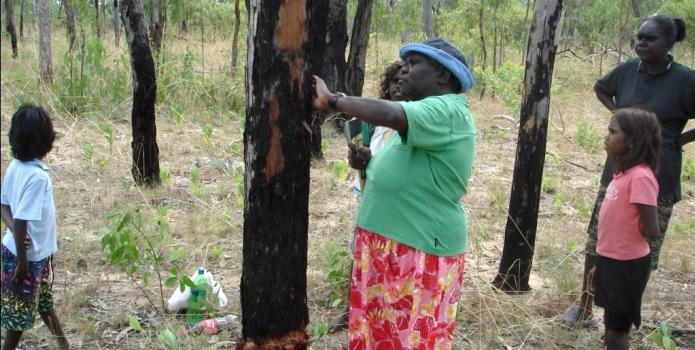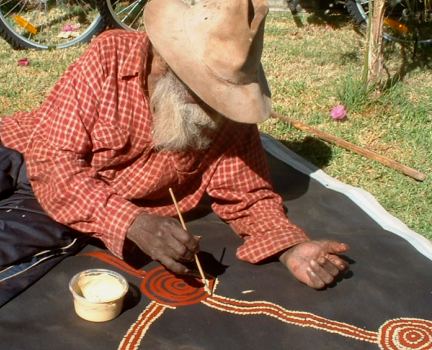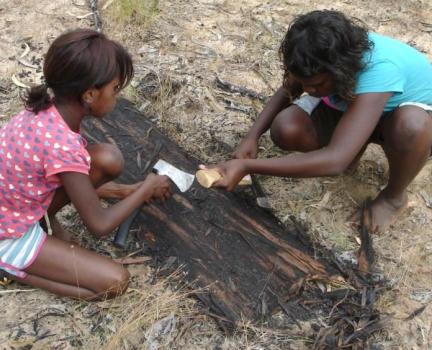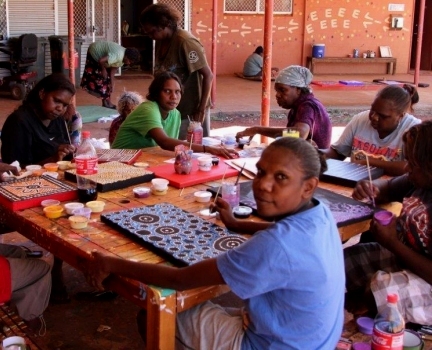Aboriginal Art and Kinship Groups
Aboriginal kinship (Skin groups)
Aboriginal art is defined by the social and cultural setting where it was created, as is the case in all world art. As a representation of knowledge and of place, set down within an existing social structure, art has a function of expressing identity.
Aboriginal artists express their identity and social relationships by utilising ancestrally inherited designs and practices. So when an Aboriginal artist who is working in a traditional social structure produces an art work, the content is fully connected to the Dreaming stories and cultural responsibilities of that artist.
In Aboriginal groups kinship networks determine how each family lineage is linked to particular Dreaming stories and sites. This in turn defines which stories an artist can paint within the traditional structures .
Geoffrey Bardon writes in his book "Papunya Tula", that in the Western Desert region, all Aboriginal men who have passed through full tribal initiation, own at least one particular Dreaming and become a custodian for the associated stories and songs. A man who has passed through this Law can paint or talk about his personal Dreaming, as he has inherited it, but within the limits set down by custom on secret knowledge.
The ownership of Dreaming stories is defined by tribal skin groups, but each story may be part of a larger narrative that might also meet up with stories from other tribal groups. The skin system manages these complexities, and is the key to understanding how the custody of Dreaming stories is managed in Aboriginal groups, and therefore how it influences the work of artists.
In the western desert the tribal skin relationships are a set of eight male skin groups, that start with ‘Tj’ and eight female skin groups, that start with ‘N’. These are set out with the list below with the male name on the left and the corresponding female name on the right -
Tjapanangka - Napanangka
Tjupurrula - Napurrula
Tjapangarti - Napangarti
Tjampitjinpa - Nampitjinpa
Tjungala - Nangala
Tjungurrayi - Nungurrayi
Tjakamarra - Nakamarra
Tjapaltjarri - Napaltjarri
Within the skin groups, the laws of marriage and generational lineage are established, and the relationship between everyone in the society is set by the network based on skin name.
Examples of some better known artists names from the skin groups are –
Michael Nelson Jakamarra
Esther Giles Nampitjinpa
Gracie Ward Napaltjarri
Janie Ward Nakamarra






